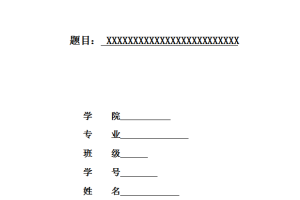摘要
随着人们环保意识的增强,以电动自行车作为交通工具,已成为人们的首选。而电池及其充电器是电动自行车的核心部件,老式充电器主要是限流限压、恒流限压式充电器,这些充电器设计并不理想。课题针对电动自行车电池的特点,以单片机作为控制芯片,采用四模式充电技术,设计了一种基于单片机控制的电动自行车充电器,电路简单可靠,参数调整方便,同传统充电器相比,具有充电时间短,能耗低等优点,使蓄电池具有较大的使用容量和较长的循环寿命。
关键词:单片机;充电器;四模式充电技术;蓄电池
Abstract
With the enhancement of environmental awareness among the people,to take electric bicycle as a means of transport has become people’first choice.Batteries and chargers are the core components of the electric bicycle,current limited restrictions Pressure charger and the constant constraints Pressure charger are the main chargers in the old days,but the design of these charger is not perfect,agaist the characteristic of the elctric bicycle batteris PIC16F73microcontroller is used as the controlling chip,we design a chager which is controlled by SCM,using four models charging technology.the circuit is simple and reliable,the parameters are easily to be adjust,compared with old chargers,the performance such as the short chaging time,low energy losses are easily obtained,the charging behavors make the battery have good capacitance and a long cycle life.
Key words: single chip microcomputer;four-mode charging technology; Battery
目 录
2 电动自行车充电模式分析……………………………………….. 2
2.1 密封铅酸蓄电池的结构、原理分析………………………………. 2
2.2 充电模式选择……………………………………………….. 2
2.2.1 目前常用的充电方式……………………………………… 2
2.3 充电模式的确定…………………………………………….. 3
3 电动自行车充电器的设计……………………………………….. 5
3.1 充电器原理………………………………………………… 5
3.2 充电控制技术………………………………………………. 5
3.3 充电器的主要技术指标……………………………………….. 7
3.4 电动车充电器的硬件设计……………………………………… 7
3.4.1 直流电源部分设计……………………………………….. 7
3.4.2 主控电路设计…………………………………………… 8
3.5 PIC16F73单片机简介……………………………………….. 15
3.5.1 PIC16F73单片机的主要功能特点…………………………… 15
3.5.2 PIC16F73的结构……………………………………….. 15
3.5.3 PIC16F73单片机控制的充电器的工作原理……………………. 16
4 控制电路的工作原理与实现…………………………………….. 17
4.1 控制电路的工作原理………………………………………… 17
4.2 控制电路的设计………………………………………….. 19
4.2.1 电流内环设计………………………………………….. 19
4.2.2 电压外环设计………………………………………….. 21
5 电动自行车充电器的软件设计与实现…………………………. 22
5.1 软件总体设计……………………………………………… 22
5.2 充电终止控制法……………………………………………. 24
5.3 显示与按键部分软件设计…………………………………….. 25
6 充电器可靠性分析……………………………………………. 26
参 考 文 献……………………………………………………. 28





